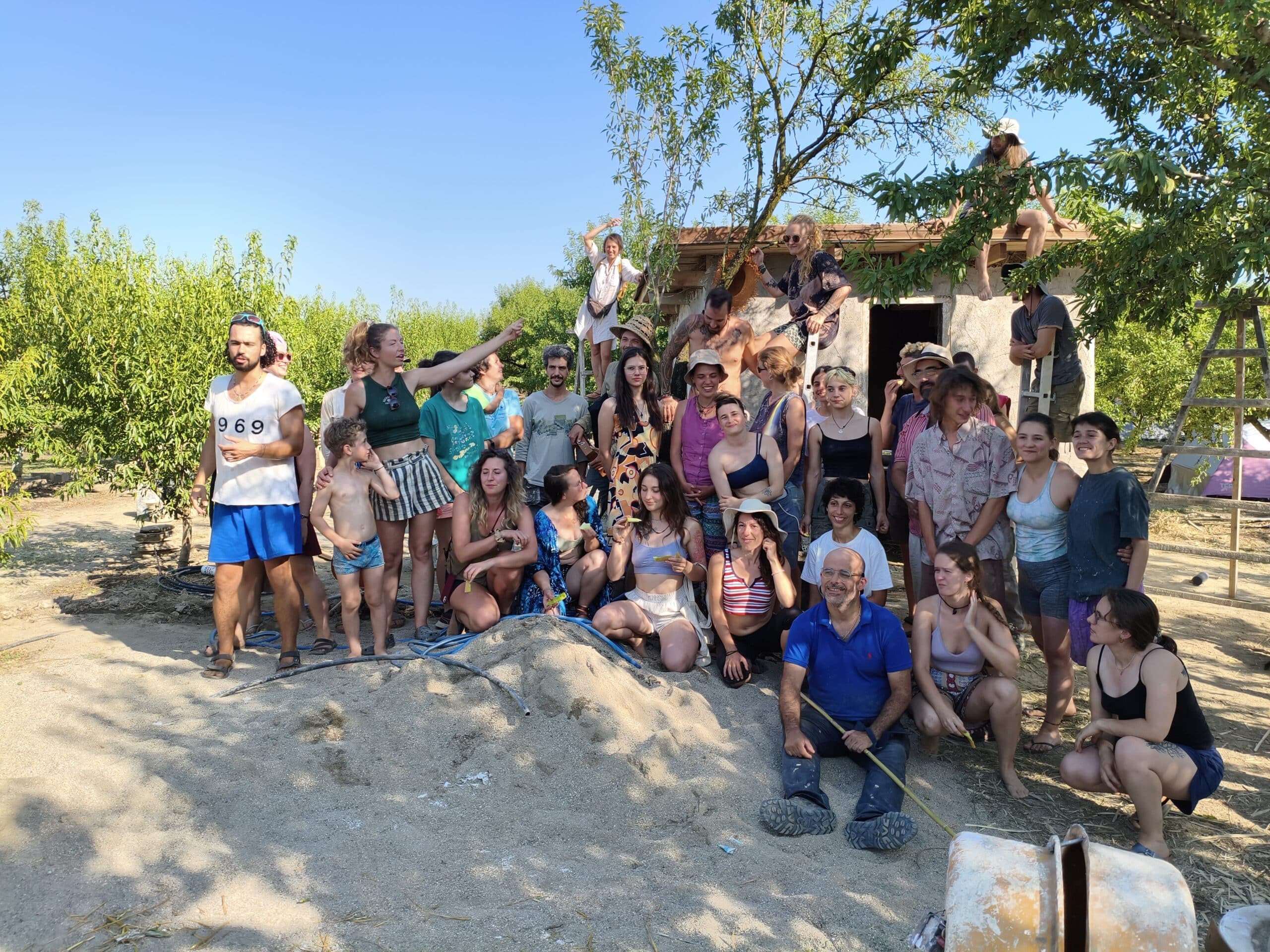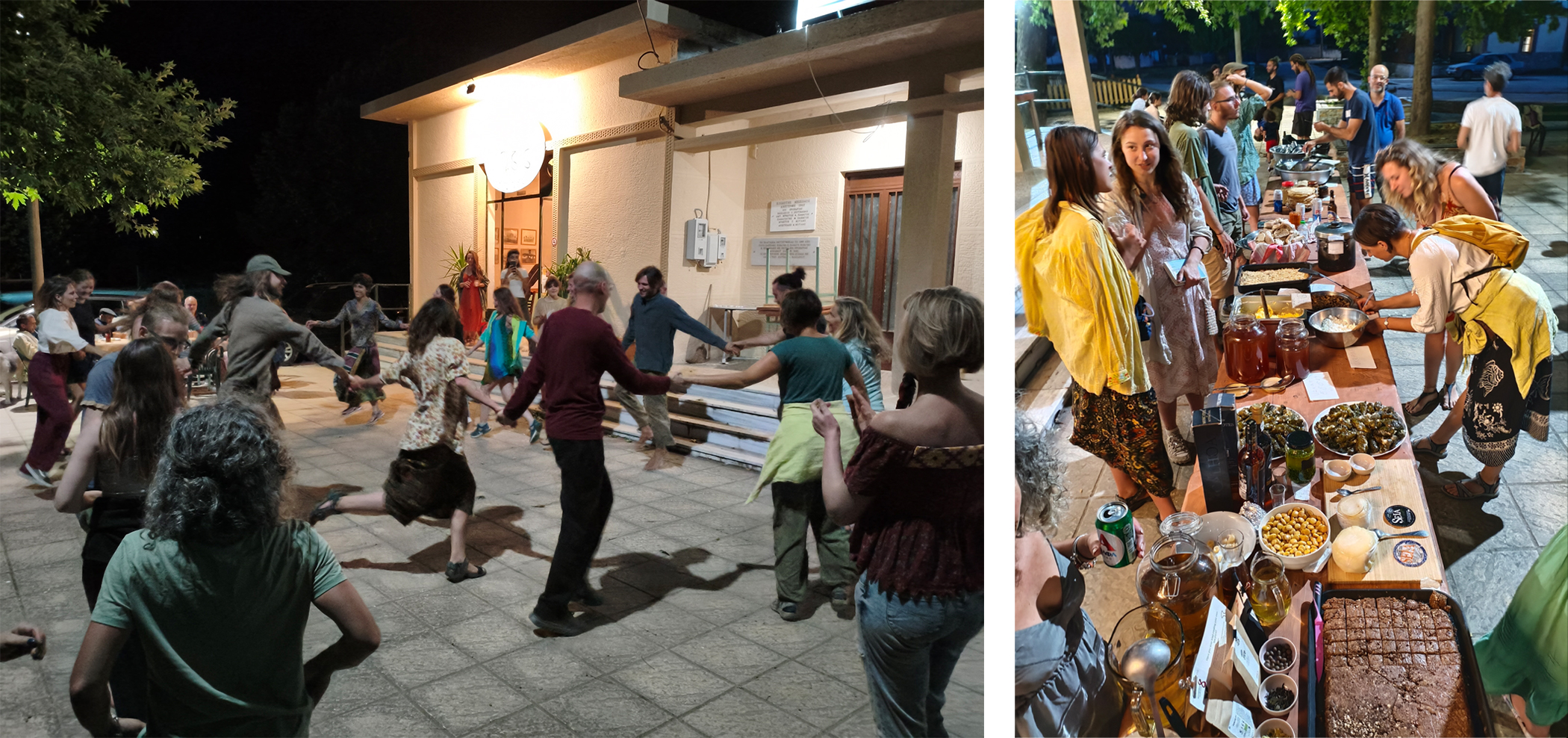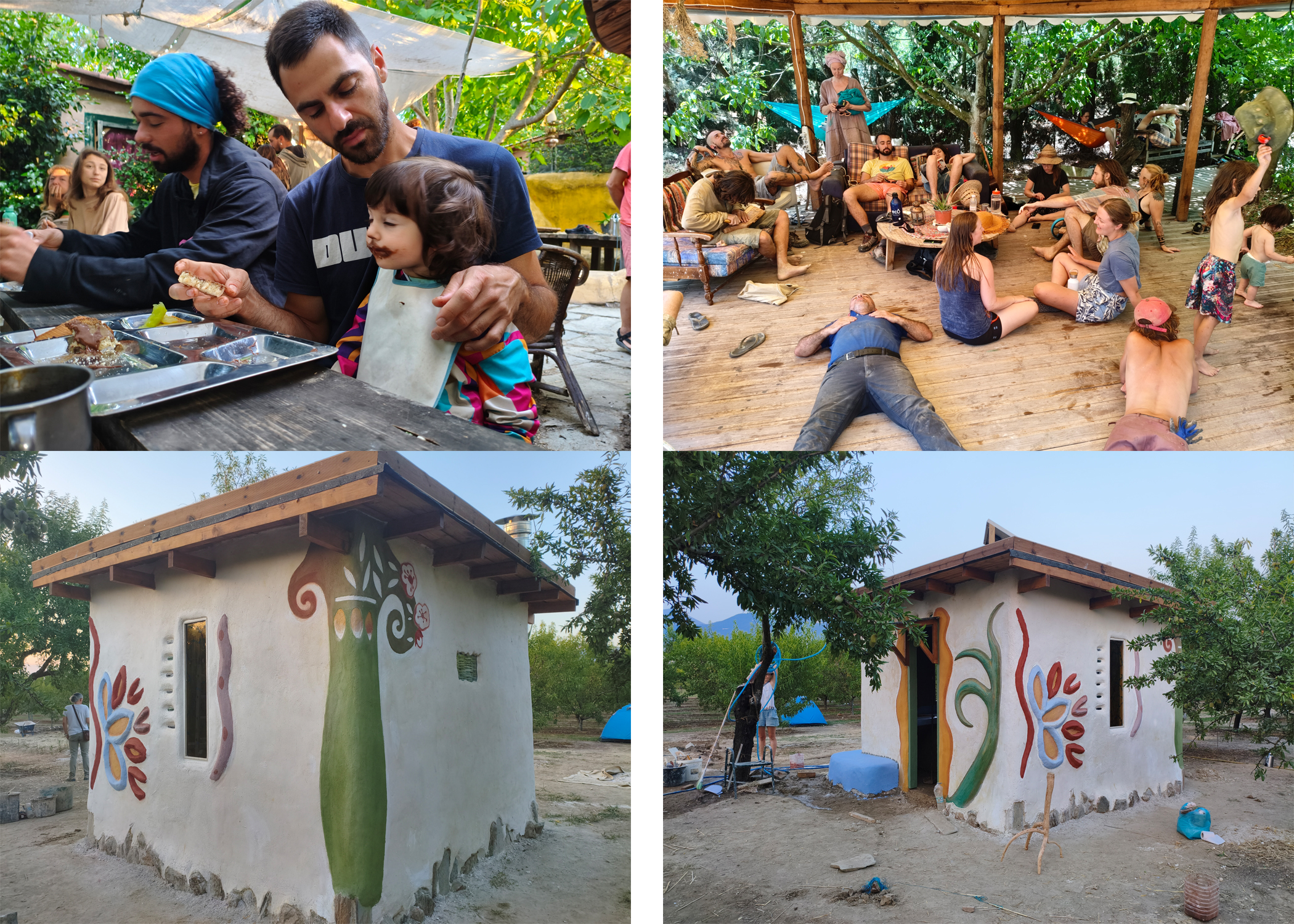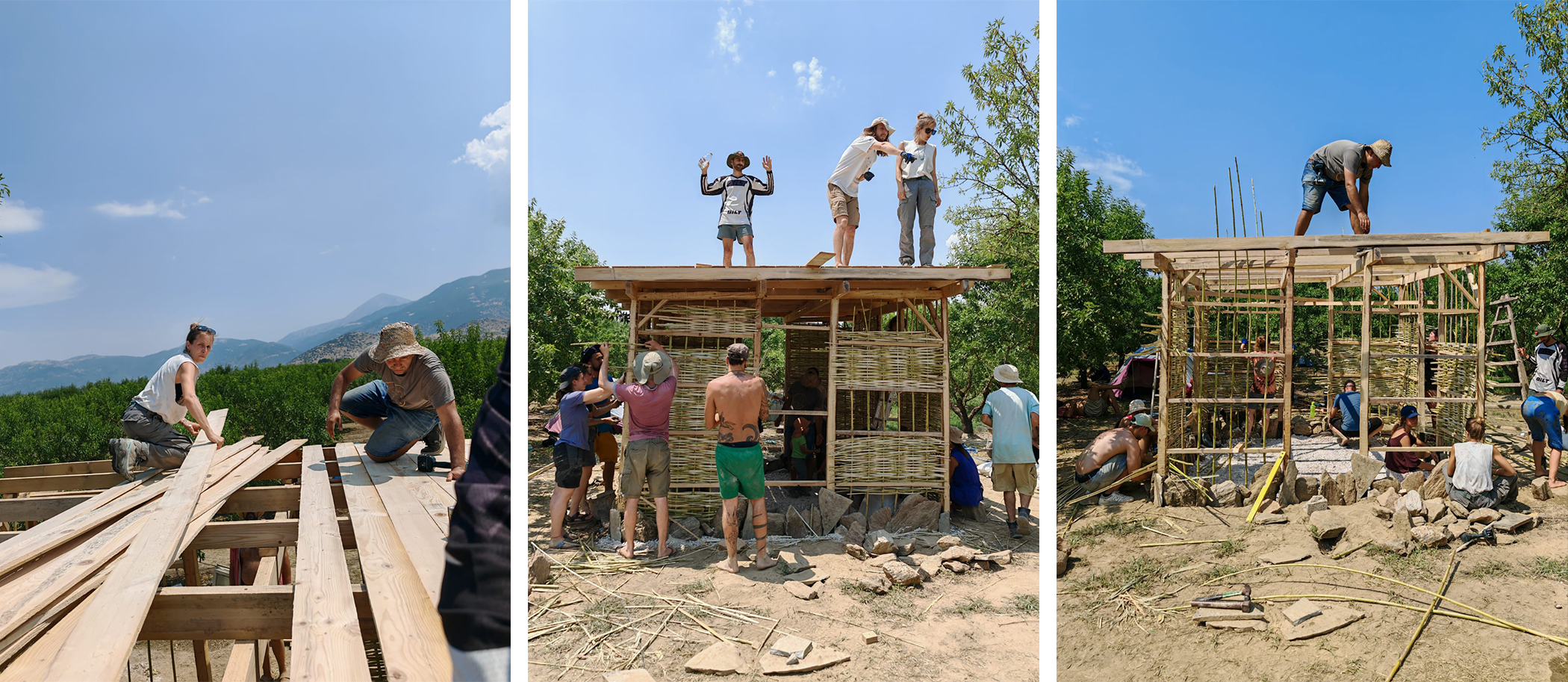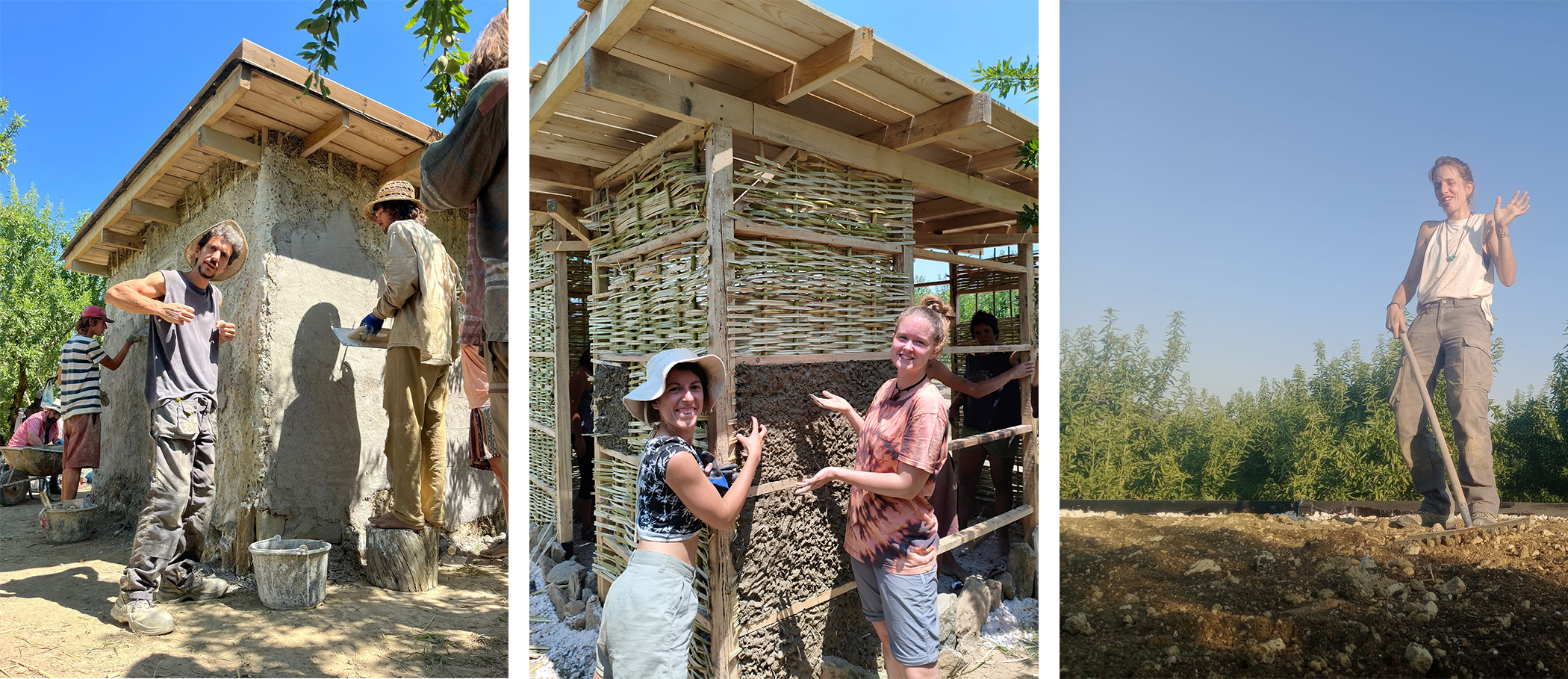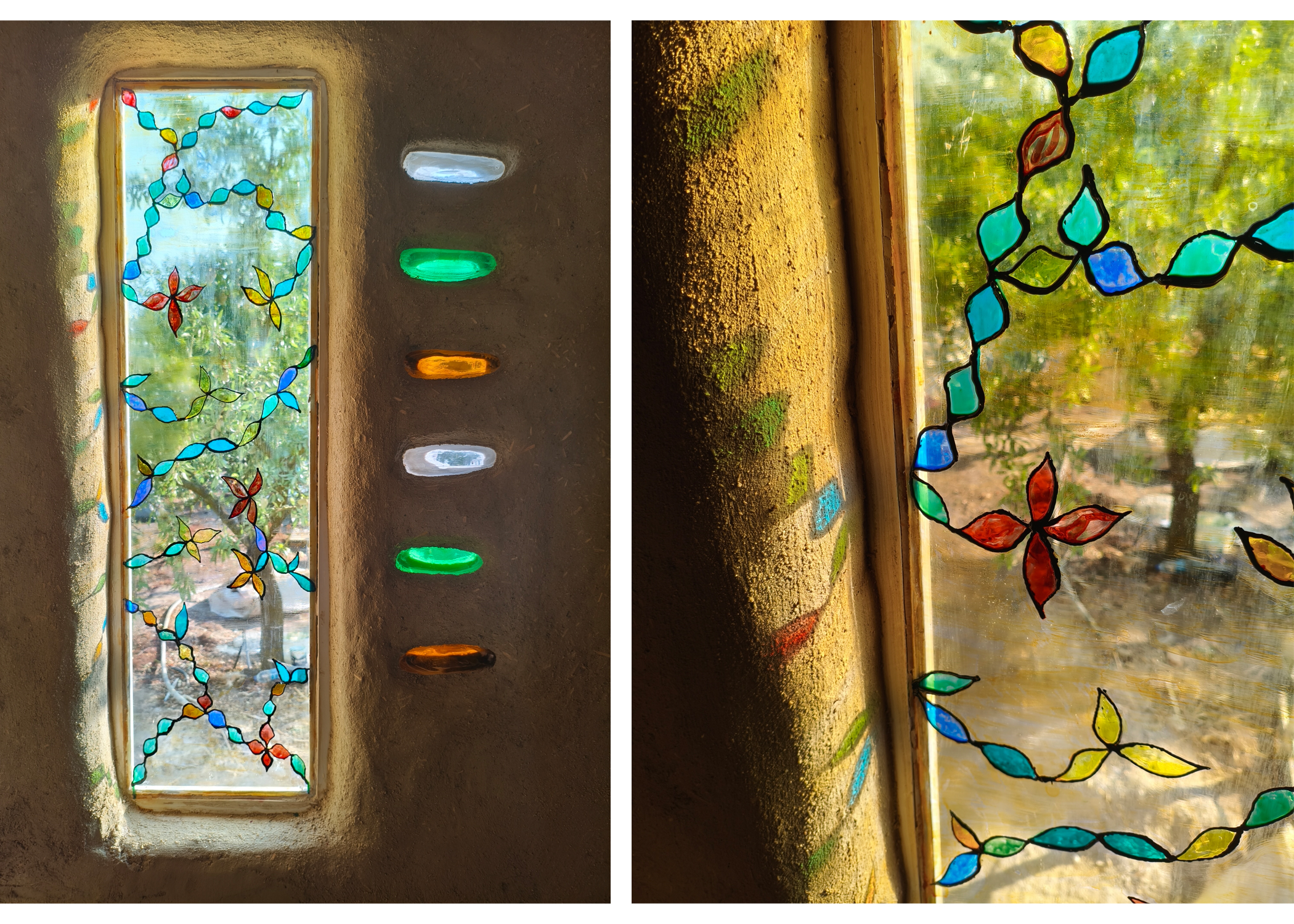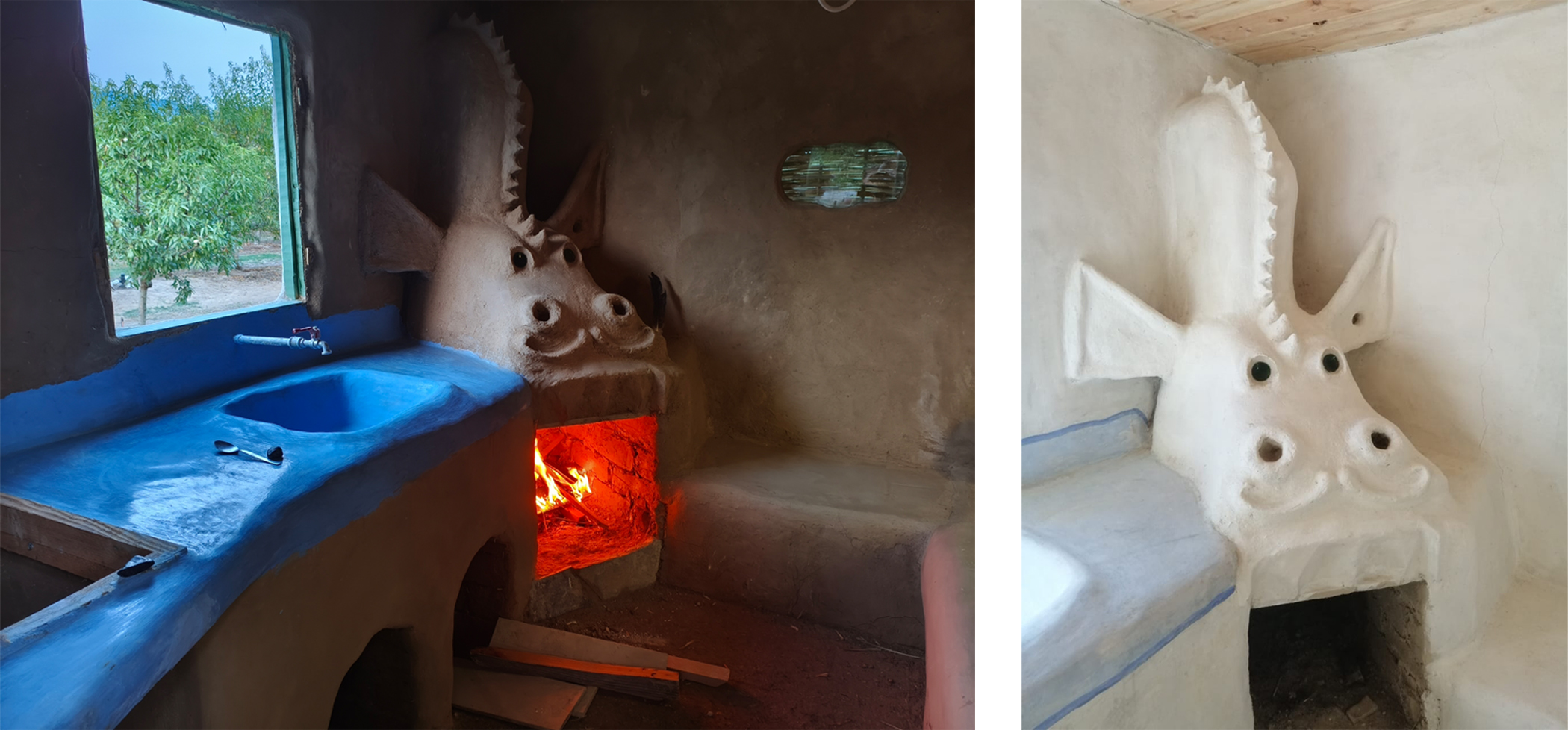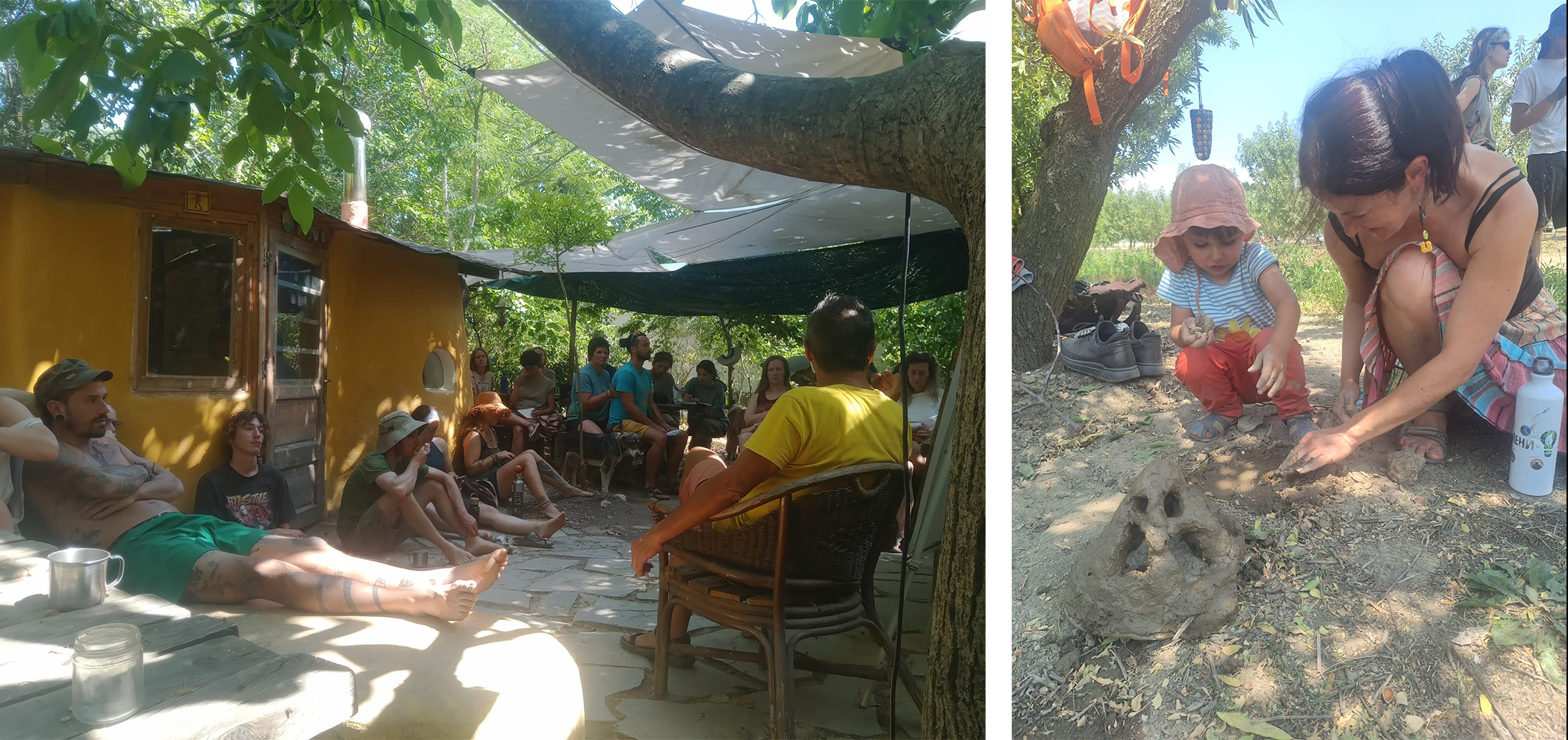Probably it happened to many of us to receive a notice from a friend or colleague sent to a number of recipients with the text, “…if anyone is interested” and a link to an event or attachment. Rushed by daily obligations that do not let us take a breath, it is often a matter of chance whether we pay attention to such a message. Whether we will find the courage and strength to push aside all those obligations, reframe our daily lives with the people we are connected to, and follow an impulse or a dream is a separate question. Pause… Think about what makes you truly happy. Be brave enough to follow it!
When we mention that we are going to a training course in Greece, most people chuckle a little and wish us “Have a nice holiday!”. With about 100 permanent residents, the village of Nessonas in central Greece is anything but a resort town. It is situated in a vast valley that was once the bottom of a lake, surrounded by bare hills, between which stands out the high pyramid of Mount Osa. In the valley there were several open mines for the extraction of aggregates, while now the main livelihood of the people is agriculture – fruit growing, cattle breeding, etc. Adjacent to this small village is the Cob farm, which functions as a small community of between 10 and 20 people. Each one of them has their own knowledge, experience and duties in order for this community to sustain and develop itself. What is interesting is the dialogue of cooperation with the village – a symbiosis between the formal village structure with its small but important conventional services and the informal community of Cob, which contributes much to enhance the quality of life and cultural exchange of this “godforsaken” village in the wilderness.
Cob organizes regular trainings related to ecological construction and permaculture, one of which we decided to attend together with my wife Zornitsa and our three-year-old son Boris. The trainings are organised by NGO projects and supported by the Erasmus programme, which fully covers transport, food and accommodation. Many of us associate Erasmus with academic exchanges of students and young people, but the program does not set age limits and many of the participants were people of age as well as families with children, professionals with careers in different fields. There were, of course, many young people as well, but one thing stood out – the colorful diversity of cultures, traditions and life stories in the “fertile” context of Cob Farm. This diversity was clearly visible, tangible and beautiful, and all participants celebrated our 9 days away from everyday life as if it was the last days of our life! Imprinted in my mind is a colourful picture of shaggy people bouncing and waving their arms wildly in the air of the square at Nessonas to the rhythms of Goran Bregovic while the locals were finishing their tsipuro and gently giggled. It was a painting where the colours did not blur into each other, but each complemented the others and made the landscape so beautiful, inspiring and full of life. The popular nationalism gave way to pure human curiosity, where everyone had an interest in the other and his world, without forgetting our identity, but also without considering that it was more important than the identity of any of the other people. On day one we gathered as 40 strangers, but on day nine we parted as a team of friends ready to help and support each other, enriched with beautiful memories and experiences of those very intense and emotional days spent together.
The training consisted of building a small house of about 10m2 with all natural materials – wood, clay, stone, straw and sheep wool. We built it for the local farmer Kyriakos who grew almond trees next to Cob. Although he knew no languages other than his native tongue, Kyriakos loved to come to us and sometimes delighted us with large bags of almonds, lemonade and other temptations. The little house had plumbing, a sewer (servicing an indoor sink), a solar panel that powered lights and outlets, and a wood-burning fireplace with a chimney for heat during the cold months. In charge of training was Costas, the founder of Cob, who took care of getting all the materials and tools needed. The man in charge of organising the construction site, who demonstrated all the construction techniques on site and had the great patience to take time with each of us, was called Jerome – a Frenchman involved in construction and living in Greece for about 10 years. The on-site training took place every day between 7:00am and 1:00pm, and in the afternoon between 5:30pm and 8:00pm, and between 4:00pm and 5:00pm there was usually a lecture on the theory of natural materials and ecological construction.
Construction started from a “bare lawn” or almost bare because a small almond tree had to be removed and found its place in the decorative layout of the house. The scarce architectural schemes with which the construction was “secured” gave only a general idea of the scale of the building, but most of the decisions were made on the spot. This gave flexibility, but also led to confusion and ambiguity about how to plan activities, what would be needed and how best to organise the people, who were no small number for this modest demonstration site. On the first day the land was cleared, the foundations prepared, water was brought to the site and the main columns and beams that were to support the roof were placed and levelled. On day two, the roof structure was completed and the roof was boarded up, allowing work to be done in the shade during the lunch and afternoon hours. In the following days, the construction of the walls and openings began, as well as the necessary installations between the room and the outside environment – ductwork, plumbing, wiring. Most of the walls were made with a hedge of split bamboo, which was covered with a mixture of clay, sand and chopped straw – a technique known in Bulgaria as “pletarka”. In Bulgaria, however, hedges are usually made with willow branches, hazel tree branches, etc. The wide wooden profiles were covered and rigged with burlap from hemp sacks, which allowed plaster to be applied later and to have good adhesion between the cley and the wood without cracking.
Alongside the main construction work was the preparation of the sheep’s wool insulation, which was brought in by local shepherds, boiled for 7 minutes in a large cauldron, disinfected with wool detergent, rinsed and left to dry, spread out in the open. An interesting fact about wool is that the raw material is available for free – most shepherds simply burn the wool in large piles or collect it for no particular purpose until they need it, but because of the range of additional treatments required, much of it goes unused. It is not clear whether this would be of interest to the construction industry, which at this stage offers few and usually quite expensive insulation products made from wool. In our case, after drying, the wool was stuffed into sacks, which were in turn stuffed into the ceiling between the rafters. The latter proved to be an unsuccessful technique, as the sacks were easily deformed and the distance between the beams was insufficient to get them in smoothly and to seal them properly leaving no air gaps. A useful experience for future practices!
Once the walls were completed, internal clay render and external lime render were applied, the latter layer being decorative. In the interior, ‘furniture’ was also constructed – a wardrobe, bedroom, fireplace, sink and desk which also allowed various techniques to be demonstrated. The sink, the fireplace and the desk were built with raw clay bricks that the participants had prepared in moulds during the first 2 days of the training, while the wardrobe was constructed in a similar way to the walls of the house (clay hedge). The sink was built with two small arches with pre-prepared formwork for them and subsequently coated with “tadelakt”, a Moroccan finishing technique that is considered completely waterproof and allows the use of natural materials in direct contact with water. The technique is slow and involves patient cycles of drying and compression of a fine mixture of lime, marble powder (in a 1:3 ratio) and coloured pigment until the bonding of the mineral aggregate (the marble powder) and the bonding material (hydrated lime) is complete. With each squeeze of the material, air and moisture are released to the surface until a very dense watertight mass remains in a layer about 4-5mm thick.
The bedroom was completed using a technique known as ‘hyper adobe’. The latter is a variation of the “super adobe” technique invented by Iranian architect Nader Khalili, which is the construction of buildings with bags filled with inert materials, usually with a certain clay content. A curious detail is that Nader Khalili invented and proposed this type of construction in a competition organized by NASA in 1984 for concepts for building human settlements on the Moon and Mars. Instead of transporting conventional building materials from Earth, the logical solution was to use local materials. And while NASA hasn’t gotten to the point of building such settlements in the Solar system, Khalili appreciated the potential of this construction technique for Earth – a social project for disaster victims, immigrants, and other socially disadvantaged and vulnerable groups who can’t afford building a new home. The “super adobe” bags are usually resistant to subsequent disasters such as floods, fires and earthquakes, and construction is quick, cheap and relatively easy even for people without much construction experience. The only difference between “super adobe” and “hyper adobe” is that the latter uses mesh instead of bags, which after compression allows better bonding between the individual rows, as well as better moisture transport through the wall. The nets are filled on site with the available material, laid in the shape required, stuffed in and compacted.
The final stage of construction of Kyriakos’ house involved finishing, decorative elements on the facade and fireplace, backfilling with substrate and landscaping the roof with drought tolerant crops. The chimney for the fireplace was completed, a small shed in front of the front door, and old windows and a door were prepared and upcycled to be used to close the openings. The days were also used for a retrospective of the past training, short afternoon trips to local natural attractions and cultural exchange. Themed evenings with traditional cuisine and traditional music were also organised where each nationality had the opportunity to present dishes, flavours and music from their country.
Similar to the academic programmes for students, Erasmus Plus allows for a broad cultural exchange between European nations and has a much higher added value than purely ‘educational’. It provides an opportunity to bring people together on a personal basis beyond the nationalistic propaganda messages often embedded in the educational curricula of many countries, especially in the Balkan Peninsula. Unforgettable for me remain the words of Marko from Belgrade, who thought that our grandfathers must have once killed each other on the fronts of the Balkan wars and expected that the Bulgarians would rather “stick a knife in his leg” and “that they cannot be trusted”. With what pleasure we studied, worked and laughed together with Marina, Marko, Zorana, Nemanja, Olja, Pipi and little Vidak, only 14 months old, from Serbia. Unforgettable were the evenings shared with the participants from Ukraine – people who fled, struggled, suffered and were traumatized by the consequences of a war that no one imagined would break out in the 21st century between two “brotherly” European nations. Unforgettable for me are the guitar evenings with Magda, an Austrian from North Tyrol, and the nightly chess games with young Tommy from Latvia, who went on a long hitchhiking trip to Central Asia.
Unforgettable are also the shared dinners with the girl who welcomed and supported us wholeheartedly – the Greek woman Natasha, who tasted with nostalgia the Bulgarian “tarator” as she once tasted it from her grandfather, who emigrated nearly a century ago from the village of Oreshnik, Elkhovo region to the village of “Novy Oreshnik” somewhere near the town of Larisa. Evenings with so much sharing, emotions and jokes that we woke up in the morning with a muscle fever from laughter. My back shudders when I recall the wonderful performance in the square in Nessonas of “How beautiful you are, the forest of mine…” by Aurelie, a British woman of French origin with an extraordinary voice. What a beautiful poem Maris, the Estonian, wrote in the silence of the night to the sound of the frog chorus and quiet guitar melodies! The only thing that replaces the sadness that these wonderful days have passed is the belief that new, perhaps even better experiences are yet to come. And to anyone who is hesitant to try – take a leap of faith, think about what makes you truly happy and be brave enough to follow it!

